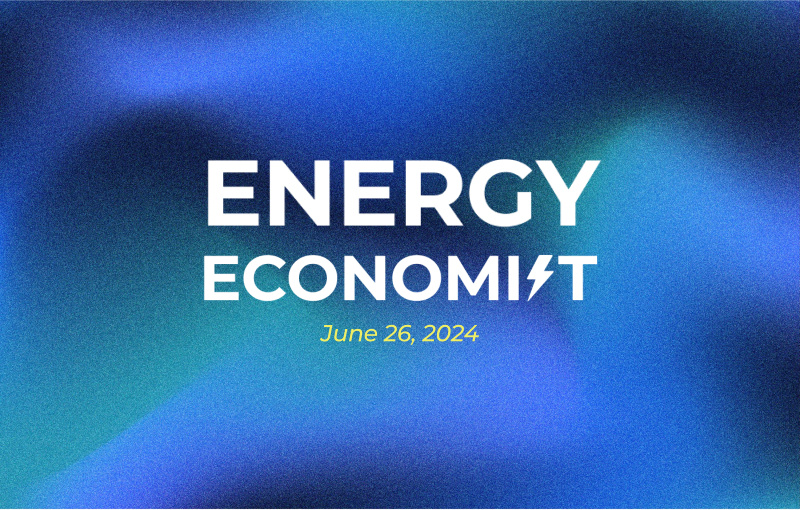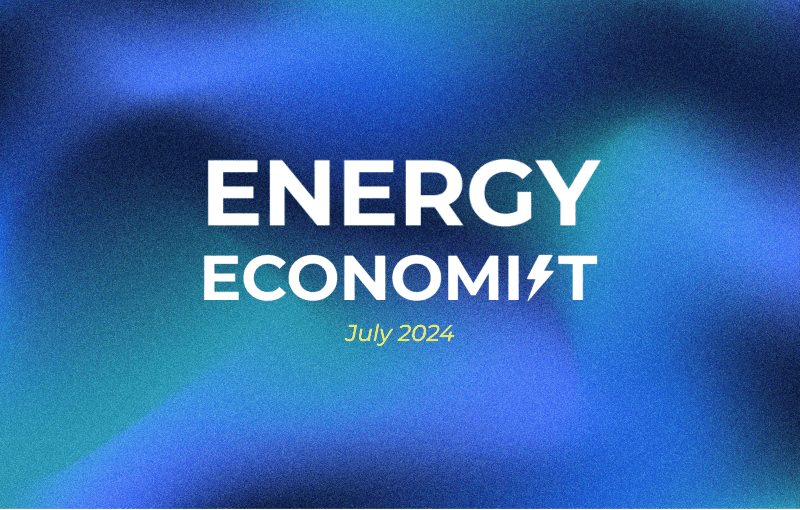Market Update: July 9, 2024
This week's update:
Last week, NYMEX natural gas prices saw high volatility, with near-term prices moving more than longer-term prices. The prompt month (August) moved down $0.28 last week to $2.32/MMBtu. The 12-month strip moved down $0.15, Calendar Strip 2025 moved down $0.07, Calendar Strips 2026 and 2027 moved down $0.04 and $0.05, respectively, Calendar Strip 2028 moved down $0.07, and Calendar Strip 2029 moved down $0.04.
-
Fundamentals:
-
Natural gas production rose slightly last week and is currently averaging around 102.5 Bcf/d. This is still down over 1.0 Bcf/d from the production levels in July 2023 and is down 4.0 Bcf/d from the alltime high set earlier this year.
-
Total U.S. demand for natural gas for July is averaging 102 Bcf/d, which is slightly higher than demand levels for July of last year. Power burn is the main driving factor behind the increase in demand, which is averaging 46.4 Bcf/d. That is up almost 1.5 Bcf/d year-over-year.
-
EIA/Gas Storage: For the week ending June 28, the EIA reported an injection of 32 Bcf into underground storage vs. an estimated injection of 34 Bcf. Inventories are 3,134 Bcf, 9.6% (275 Bcf) more than the same period last year and 18.8% (496 Bcf) more than the 5-year average.
-
Reported revisions caused the stocks for June 21, 2024 to change from 3,097 Bcf to 3,102 Bcf. As a result, the implied net change between the weeks ending June 14 and June 21 changed from 52 Bcf to 57 Bcf
Weather impact:
-
Weather forecasts for this upcoming week are calling for above-average temperatures on the East and West Coasts with the Midwest experiencing normal temperatures. By the weekend, the entire country is expected to see warmer-than-normal temperatures.
-
Scorching heat is expected to continue into August. If these forecasts are accurate, NYMEX futures could increase. However, the inaccurate weather forecasts of the past three weeks have shifted the market’s attention back to the high storage levels, which limits the potential for price increases.
In short:
-
Recent weather has been cooler than expected, reducing cooling degree days (CDDs) by 17 over the past week. This has caused NYMEX futures to fall below $2.50. Key technical support at $2.37 per MMBtu may help stabilize prices.
-
Following the 4th of July weekend, increasing heat and post-holiday demand could lead to higher power consumption. The following four EIA storage weeks are expected to average 99 CDDs per week, which may boost natural gas usage and stabilize prices.
-
Rising production, which has recently been a bearish factor, might continue to increase. However, the growth in supply may slow down until the Matterhorn pipeline becomes operational.
-
Lower 48 storage levels could exceed 3,200 Bcf before mid-July. While a logical market might build October storage to 3,900-3,950 Bcf, recent trends show the market is comfortable with lower storage levels. Caution is warranted, as price declines often occur in the fall when storage fills up. Although not the most likely scenario, prices in the low $2.00s per MMBtu in autumn cannot be ruled out.
-
Based on current outlooks, we foresee a likely scenario in which NYMEX futures rebound higher in the immediate term (7-10 days) following last week’s weather soft patch. If the heat arrives as predicted for the remainder of the summer (30-45 days), we could see significant pricing upside. However, after recent weather weak spots, the market has refocused on bloated storage levels – diminishing the magnitude of the likely NYMEX rebound. We still foresee prices going up for summer in the near-term, but not to the extent we initially expected. We still hold a bearish outlook for fall month futures as production is expected to increase and storage coffers will fill.
In Depth:
-
Cooling demand is expected to rebound over the next 7-10 days, increasing by more than 3 CDDs/day, which could boost power burns and support NYMEX futures. However, the 4th of July holiday may delay the price recovery until mid-month.
-
Near-term weather forecasts are weaker, and production is increasing, now only 2.0-2.3 Bcf/d below early March levels. This has raised concerns about an oversupplied natural gas market. The EIA 914 report showed April production fell by only 0.75 Bcf/d, less than expected. The new Mountain Valley Pipeline is adding nearly 1.0 Bcf/d, with Appalachian supply up 0.5-0.7 Bcf/d over the past ten days. Deferred production from spring may continue to emerge, posing short-to-medium term supply risks.
-
Post-holiday gas burn in the power sector is expected to rise as intense heat hits the Lower 48. Weekly power burns may increase by 5.3 Bcf/d, driven by the return to non-holiday weeks and an additional 19 CDDs/week. Rising demand, especially if LNG demand improves, could spark a short-term rebound in natural gas futures. However, the heat is centered over the Rockies, not the key demand regions of the South Central and Southeast, potentially limiting the bullish impact.
-
Storage surpluses are decreasing rapidly, but high absolute storage levels are putting downward pressure on prices. From May to mid-June, the focus was on declining storage surpluses due to supply drops and forecasts of a hot summer. Recently, weaker cooling demand and rebounding supply have shifted attention back to high storage levels. Although upcoming heat may tighten physical market pricing and support NYMEX futures, significant surpluses must be cleared for prices to rise substantially and sustainably, indicating a lower ceiling for summer natural gas prices.
-
DTN forecasts extreme heat for the last two weeks of July, averaging 100 CDDs/week, with the next four EIA storage weeks expected to average 99 CDDs/week. Despite recent downward revisions, the outlook remains very hot. The Madden Julian Oscillation may weaken, potentially bringing cooler temperatures to the Central US. Hurricanes Beryl and possibly Chris may approach the Gulf Coast in the next 8-15 days, but the tropics should calm down by late July. If the severe heat materializes, strong power burns could halt the recent downtrend and prompt a moderate rebound. However, traders remain cautious due to recent forecast inaccuracies.
Natural Gas Prices:
.png?width=1728&height=1012&name=unnamed%20(12).png)
For contracts expiring in next 3 months (or NMR):
- Why buy now? – DRT for 12-Month contracts starting in Aug and Sept below:
.png?width=1786&height=1029&name=unnamed%20(13).png)
.png?width=1786&height=1029&name=unnamed%20(14).png)
- General info regarding the start date: Aug is down $0.014 /Therm, Sep down $0.012 /Therm.
For contracts expiring in 9-12 months:
.png?width=1786&height=1029&name=unnamed%20(15).png)
-
Why buy now? – Gas 2025 renewals are still near their lowest since Jul ‘22. The contract price fell $0.007/ Therm since the last update (7/1/24).



